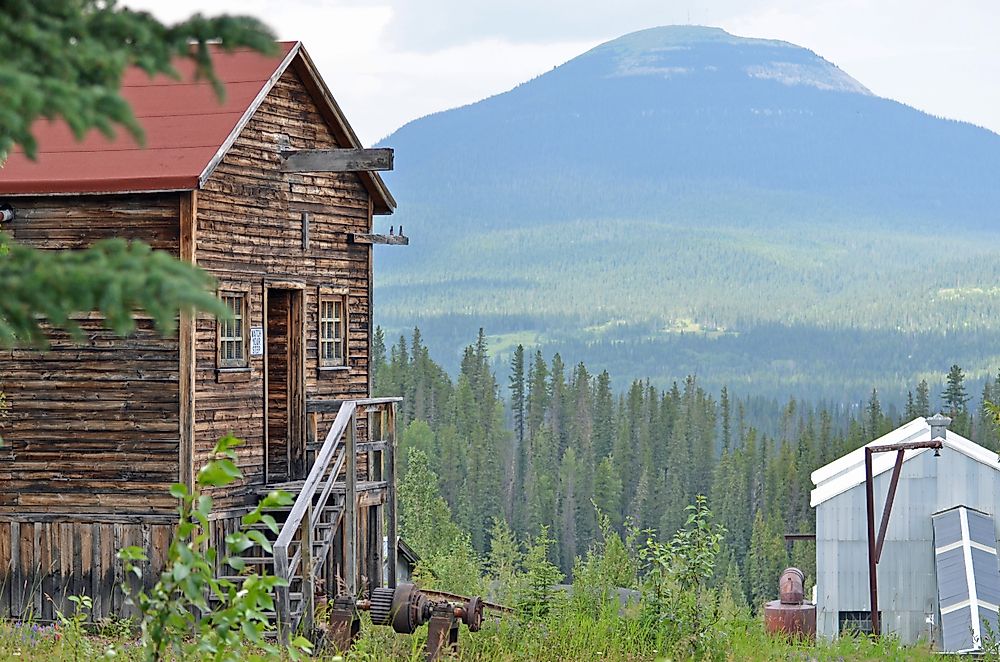Ghost Towns of Canada: Nordegg, Alberta

Ghost towns preserve of the history of time period and events that once existed. Some of the towns are eerie to visit because of the history behind their collapse and their vast emptiness, while other ghost towns are always busy with tourist activities. One example of a ghost town is Nordegg, Alberta which was once a busy mining town. The town is presently a shadow of its former self with only a few buildings still standing. Mining equipment is left in the open as if people just walked away from their daily jobs. Although Nordegg has a bit of dark history, the town was ultimately killed by the shift from coal to diesel fuel. The mine was officially closed in 1955 after 44 years of operation.
4. Where Is Nordegg?
Nordegg is a small settlement situated in Alberta, Canada. It is located in Clearwater County, in the valleys of North Saskatchewan River. The hamlet is in the foothill of the Canadian Rockies, close to where the David Thompson crosses the Highway 734. Clearwater County is in Division 9, Alberta. Nordegg Town lies approximately 90 kilometers west of Rocky Mountain House. It is approximately 3-hour drive from both Edmonton and Calgary yet so different from the two urban centers in terms of lifestyle. The ghost town is approximately 200 kilometers west of Red Deer on Highway number 11 and 100 kilometers east of Saskatchewan Crossing.
Much of the surrounding area is wild and untouched except the mines. The nearby lakes, streams, and rivers offer an opportunity for recreation and adventure. Some of the lakes around Nordegg include Long and Carp Lakes. A few miles from the town is the Fish Lake and Goldeye Lake. Nordegg is divided into three components that make up the townsite, including the abandoned Brazeau Collieries site, the main street, and the active townsite.
3. Town History
The history of the ghost town of Nordegg dates back to 1907 when Martin Cohn (who changed his name to Martin Nordegg) staked a claim of the coal deposits in South Brazeau (Blackstone), North Saskatchewan River, and Bighorn. Martin had moved to Canada from Germany following an invitation from the Federal Government to help in the development of Canada’s mineral resources. He facilitated the founding of Brazeau Collieries to help in the exploitation of coal in the area. Canadian Northern Railway also agreed to build a railway line to the area, leading to the establishing of of Nordegg.
In 1911, a campsite was put up in the area to host the explorers and miners who had begun working on the site. The actual mining of coal began in 1912 while a railway line reached the area in 1913. Before that, the area was mainly accessible by horses. The railway line was named Brazeau Branch.
The town of Nordegg was officially founded in 1914 as among the first organized settlement in Alberta. The town was named Nordegg by William Mackenzie in honor of Martin Nordegg. Nordegg Town became a top coal-producing town in Alberta, attracting a population of approximately 3,000 people in the early 1940s. However, the mines collapsed in 1955 with most people leaving the area following the closing of mines, although a few people stayed on with the hope of reviving the mines.
2. From Profitable Mine to Ghost Town
Nordegg mine was among Alberta’s top coal-producing. The town had 5 coal seams of which only two were mined; Number 2 and Number 3 Seams, averaging 7.7 feet and 15.9 feet thick. The production of coal in the area peaked in 1923 when 450,000 tons were produced by a labor force of 800 people, an average of 1,200 tons per day. The extracted coal was mainly thermal coal that was used by rail lines instead of a coking coal. In 1937, more briquetting plants were included in the coal-mining operation in Nordegg to help in the production of marketable products from the fine coal.
Nordegg mine began showing signs of decline in the 1940s following series of unfortunate incidences in the area. Although the mines were the most gas-free in Alberta, the Number 3 Seam exploded on October 3, 1941, killing 29 miners. The explosion caused the worst accident in the Alberta Coal Branch and today a memorial monument for those miners who risked their lives in the mines have been set up. Although many people thought that the explosion would end the activities in the town, mining activities resumed six weeks after the explosion with more people coming to the town.
In June 1950, some parts of the mine were destroyed by fire. A new briquetting plant was built with the renovation of the area costing approximately $1.5 million. The reconstruction incurred the mine a huge government debt. Coal market also declined following the switch to diesel for locomotive fuel.
The mine was officially shut down in January 1955 and the once vibrant town turned into a ghost town for 8 years before it was taken over by the Government. Most of the people relocated to other towns with only a few staying on.
1. National Historic Site
The Nordegg coal mining site was designated a National Heritage Site in February 2002. The site was selected for the role it played in steam coal development in the country and the growth of the coal industry. The National Historic site comprises the Brazeau Collieries Historic Mine Site and Nordegg Heritage Center. The Brazeau Collieries Historic Mine Site is estimated to have produced coal amounting to ten million tons in the period the coal mine lasted. It was among the largest briquetting sites in Canada and was renowned for innovative technology and practices. Nordegg Heritage Center is home to Nordegg Museum and Miners Cafe.











